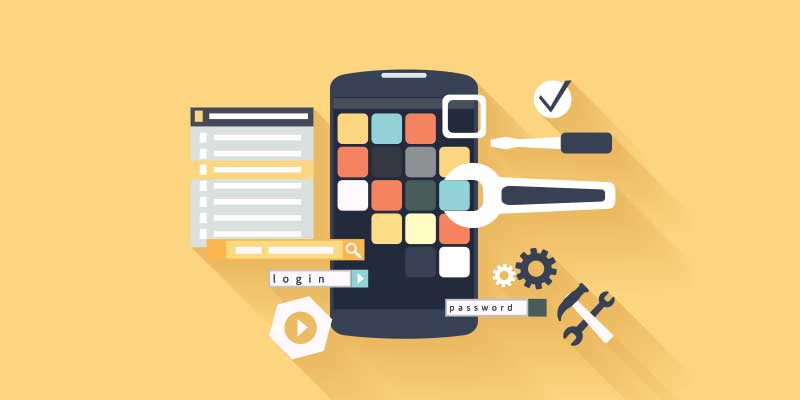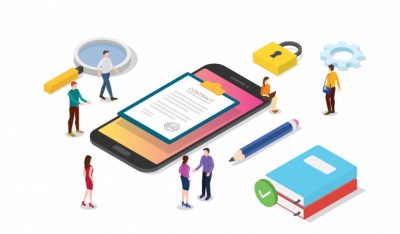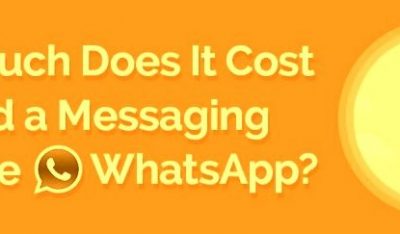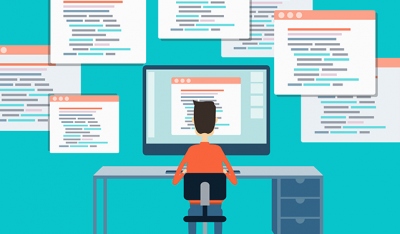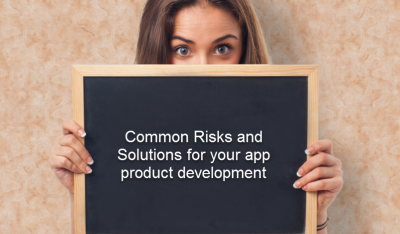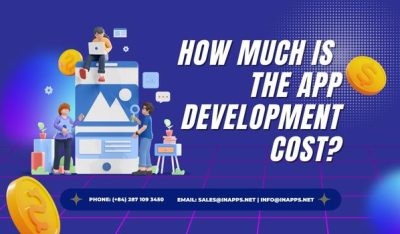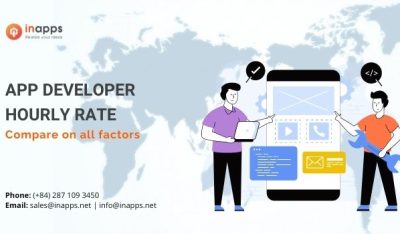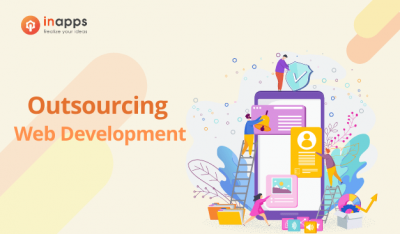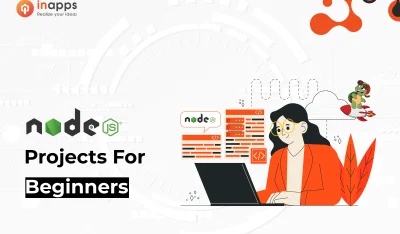- Home
- >
- Mobile apps development
- >
- Checklist to a successful mobile app development
Since the past recent years, mobile apps have been changing our lives constantly. Therefore, the mobile app development industry is one of the fastest growing industries.
And it shows no signs of slowing down in the future as well.
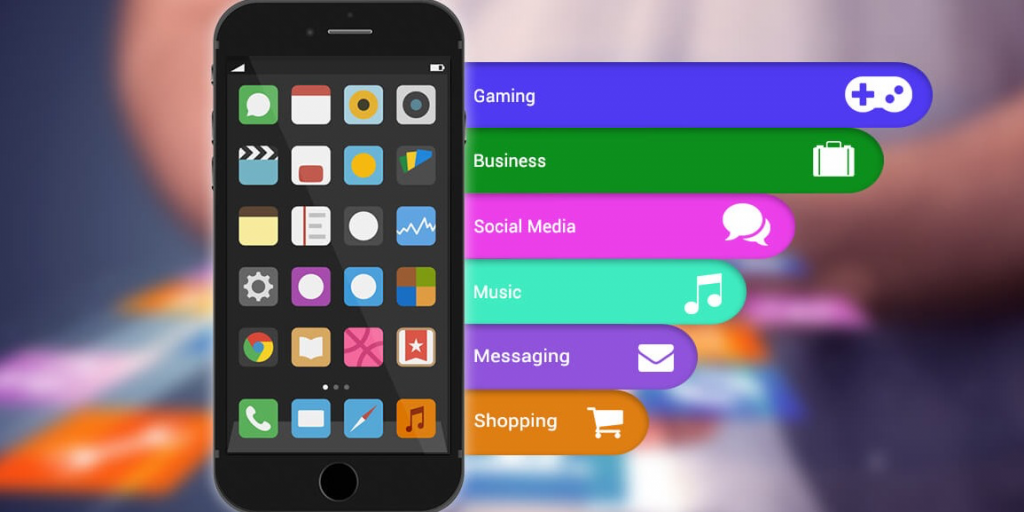
Because of enormous popularity and usefulness, mobile apps serve to be a significant opportunity for business development. With latest technological advancements and new inventions coming to life almost every day, it’s not wrong to think that 2019 will most assuredly be the year of mobile apps.
>> Learn more: How custom mobile application development brings your idea to life?
Many entrepreneurs and business owners start planning great strategies for their mobile app development with a desire of capturing and increasing the market share. However, it is not easy to succeed from the first attempt if you do not know what to expect.
After conducting a thorough research by our business analyst team, we’ve identified and listed down below the checklist to a successful mobile app development. Hopefully this checklist will help you succeed in developing your MVP mobile app and start driving revenue through it after market launch.
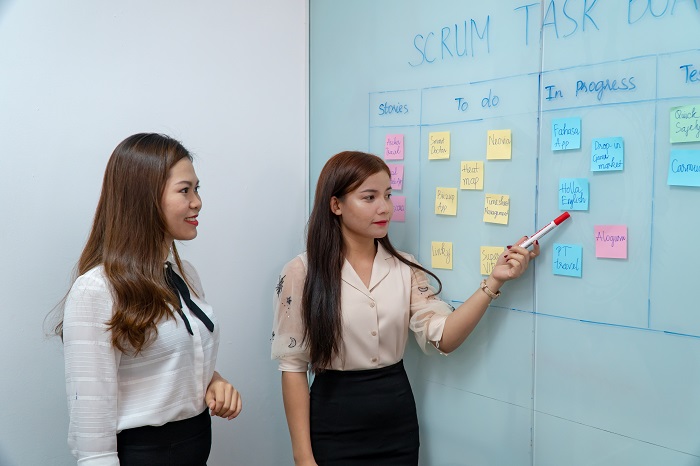
The checklist simply has 3 questions that you need to solve:
Key Summary
- Overview: The article provides a comprehensive checklist for developing a successful mobile app, covering planning, design, development, testing, and launch phases, with insights from InApps Technology on best practices for startups and enterprises.
- Key Checklist Steps:
- Market Research and Idea Validation:
- Identify target audience, competitors, and market gaps to ensure the app’s relevance.
- Validate the concept through surveys, focus groups, or competitor analysis.
- Define Clear Objectives:
- Set specific goals (e.g., increase user engagement, revenue) and define success metrics (e.g., downloads, retention rate).
- Determine app type (native, hybrid, or web) based on goals and budget.
- Choose the Right Tech Stack:
- Select frameworks like Flutter or React Native for cross-platform apps, or Swift/Kotlin for native development.
- Use scalable backend solutions (e.g., Node.js, AWS) and databases (e.g., MongoDB, Firebase).
- Design User-Centric UI/UX:
- Create wireframes and prototypes using tools like Figma or Adobe XD.
- Ensure intuitive navigation, responsive design, and accessibility for diverse users.
- Plan Features and MVP:
- Prioritize core features for a Minimum Viable Product (MVP) to launch quickly and gather feedback.
- Examples: User authentication, push notifications, or payment integration.
- Development Process:
- Follow Agile methodologies with sprints for iterative development.
- Integrate APIs (e.g., Google Maps, payment gateways) and ensure secure coding practices.
- Testing and Quality Assurance:
- Conduct unit, integration, and user acceptance testing to identify bugs.
- Test across devices, OS versions (iOS/Android), and network conditions using tools like TestFlight or BrowserStack.
- App Store Compliance:
- Adhere to Apple App Store and Google Play guidelines (e.g., privacy policies, content rules).
- Optimize App Store Optimization (ASO) with relevant keywords, visuals, and descriptions.
- Launch and Marketing:
- Plan a soft launch to test in smaller markets, then scale to global release.
- Use social media, influencer marketing, and paid ads to drive downloads.
- Post-Launch Maintenance:
- Monitor performance with analytics tools (e.g., Google Analytics, Firebase).
- Release updates for bug fixes, new features, and OS compatibility.
- Market Research and Idea Validation:
- Benefits:
- Structured approach minimizes risks and ensures market fit.
- MVP strategy accelerates time-to-market and reduces initial costs.
- Offshore development (e.g., Vietnam at $20-$40/hour via InApps Technology) enhances cost efficiency.
- Challenges:
- Balancing feature richness with budget and timeline constraints.
- Ensuring cross-platform compatibility and performance.
- Navigating app store rejections due to non-compliance.
- Recommendations:
- Invest in thorough market research to align the app with user needs.
- Use cross-platform frameworks like Flutter to save development time.
- Partner with InApps Technology for expert mobile app development and cost-effective offshore teams.
- Continuously iterate based on user feedback and analytics post-launch.
Why is MVP important for new product launches?
While starting up a business or launching a new product, have you ever invested time in the initial idea approval? If yes, then an MVP is the right solution to get to work on your idea from the beginning and test it quickly for launch.
Below are the reasons why you need MVP development:
- Creating an initial model — this gives a start point for discussions and offers clear visual points of reference.
- Conducting initial idea approval — this includes sharing the model with a few prospects, and testing it with genuine users, to better understand issues you may face with your innovation.
- Preparing to begin your journey — you have invested months improving your software idea, but to actually start building your product can feel like a big deal. An MVP prepares you to take that hike.

While building a mobile app, you must understand that the whole idea of MVP is divided into two main parts:
- The first part refers to business and marketing; because of the MVP, you are now able to launch a survey to find those best marketing approaches and the advertising platforms that could be used for the advancement of your product.
- The second part refers to the technical aspect. Through an MVP, you will be able to execute important programming and designing features, which, in turn, will help you make your app unique.
Which technology stack to choose?
What is technology stack?
As a whole, the technology stack for mobile app development may be categorised into 4 aspects. These are the very areas that come together to form the anatomy of any application.
- Frontend Development: This is essentially the interface of the mobile app using which the users interact with the app.
- Backend Development: This is the part that is responsible for taking the user input, processing this input, and then converting it into an output.
- Development Platform: This is the place where interfaces and libraries come together to design and develop the mobile application.
- Additional Requirements: These include the technology elements that affect the performance of the app, security, and robustness.
After you have understood what a technology stack means, it is time you explored the reasons why businesses must sit with the app development professionals or the company that they have hired and discussed the technology stack that would go into building the mobile app.
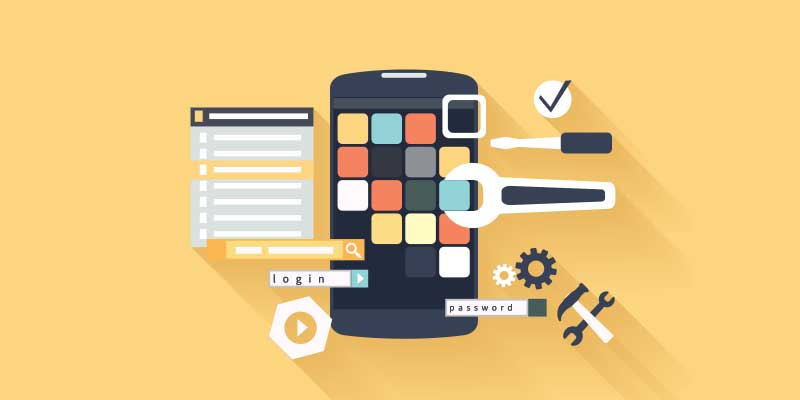
Which is the best technology stack to choose?
Choosing the best technology stack is sure to affect the immediate performance of the app and mark its future growth prospects. Choosing the wrong tech stack can actually lead to more deep-rooted problems in your app altogether.
We suggest you some technology stacks to read and consider:
- Native App Technology Stack
Preferred by most companies for their robustness and high performance, native apps present themselves as a near perfect solution when it comes to mobile app development for business. A native app lets the developers integrate the device’s in-built functionalities in their mobile app without having to rely on any external third-party API.
When you think about a native app it is natural that iOS and Android apps would pop up in your head. Now, both the platforms are different in their construct, which means that you would have to choose entirely different technology stacks for both of them.
- Technology Stack for Android Mobile Apps
Though Kotlin is deemed as the official programming language for Android app development, the Android app developers still prefer to use Java language.
When it comes to IDE, the most commonly used software for development purposes are Eclipse and Android Studio. These Android tech stacks have been proven to help the developers rise the total app count to millions and beyond, thus enriching the android app development industry.
- Technology Stack for iOS Mobile Apps
Swift & Objective-C are the most preferred languages for iOS app development. IntelliJ AppCode and Apple XCode are the most commonly used toolkits among iPad and iPhone app developers.
When brought together, they form the foundation of a flourishing iOS app industry that has earned respect in the field of mobile apps for their quality and superior user experience.
- Technology Stack for Hybrid Apps
The standard web techniques that are preferred for hybrid app development include CSS, HTML 5, and JavaScript. These apps are typically sectioned into two portions — backend and native shell. The hybrid apps can run on all the platforms and offer access to API.
The three most commonly used frameworks here are — Cordova, Sencha Touch 2, and Ionic.
- Technology Stack for Cross-Platform Apps
Cross platform app development refers to the process of using the same code for app development that can be run on a number of platforms including Android, iOS, and even the web. These lend the businesses with a greater geographical coverage, lower cost of development, and lesser go to market time for the mobile apps.
There are three major technologies that go into a cross platform technology stack — Flutter, React Native, and Xamarin.
>> Read more about: 4 reasons to hire InApps full-stack developer team
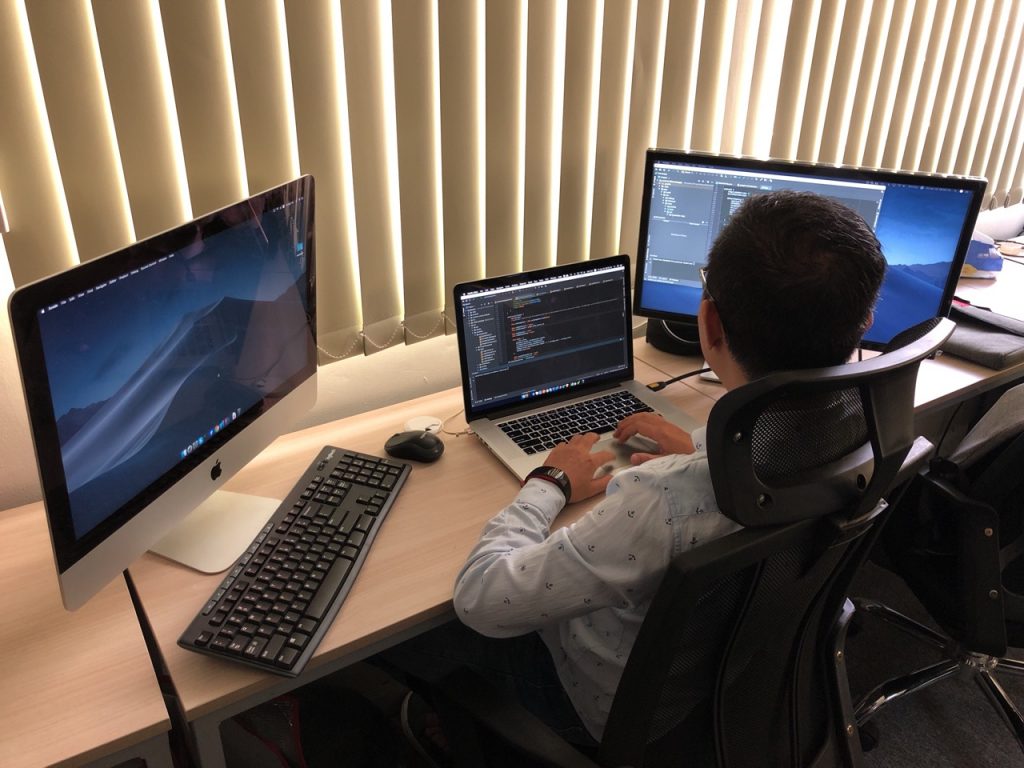
We are proud of owning the latest technology stacks, which increases our high competency with other competitors on the market.
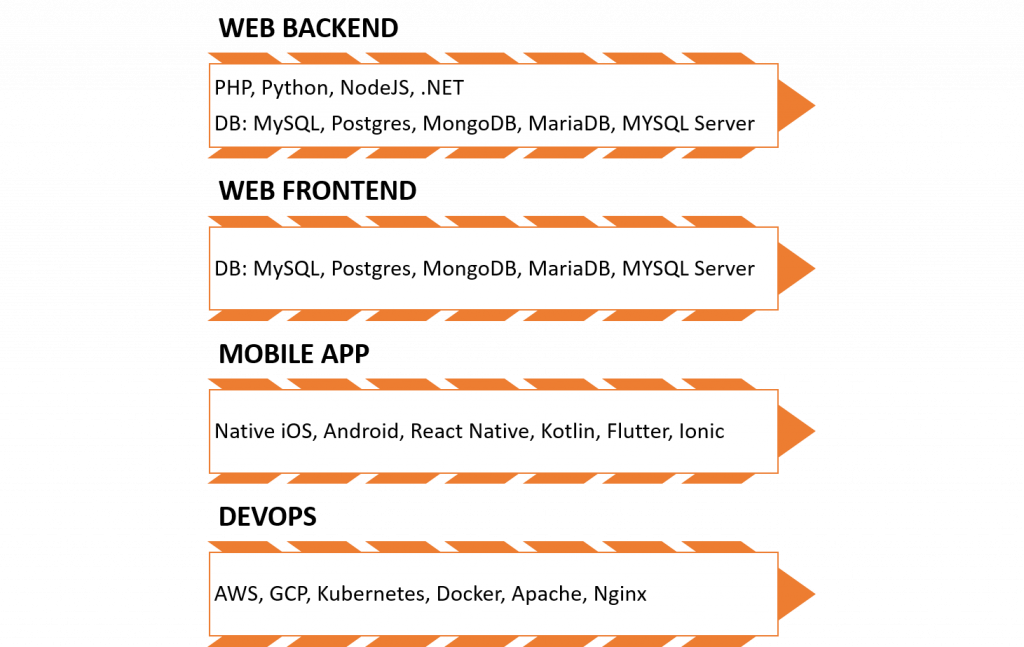
Which development methodology to use?
We primarily use Agile SCRUM methodology unless clients have specific project management and development styles they prefer to use.
SCRUM is the most widely preferred agile software development approach. Basically, this excellent development is suitable for those development projects that are constantly altering or extremely developing requirements.
The Scrum development model initiates with an ephemeral planning, conference and completes with a concluding review. This growth methodology is used for prompt development of software that happens to include a series of iterations to generate required software.
It is a perfect approach because it effortlessly brings on track the deliberate progressing projects.
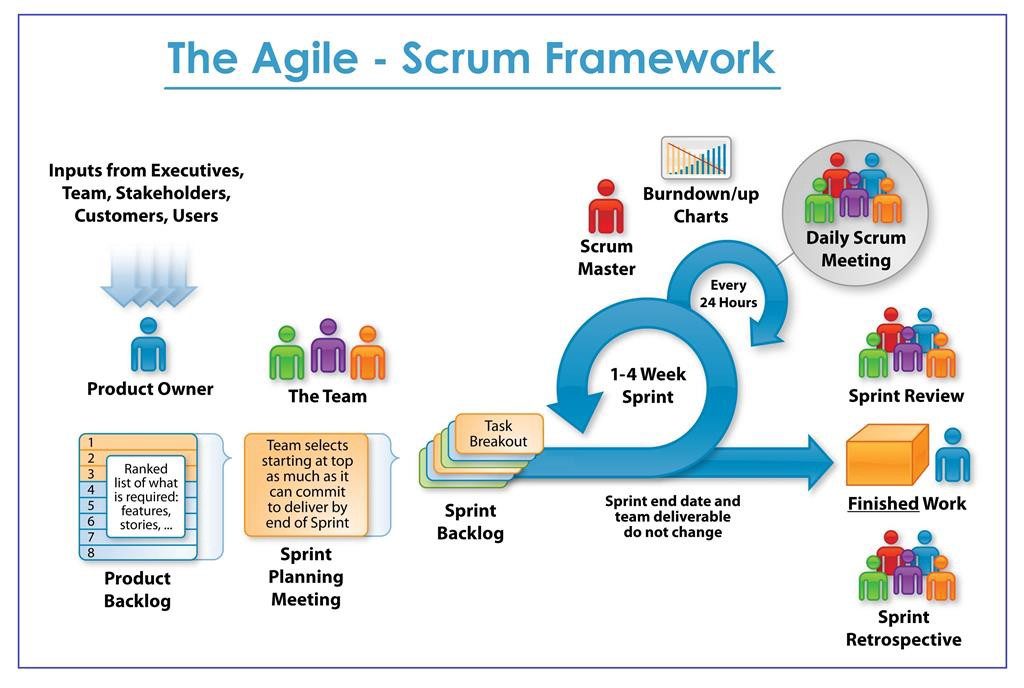
Solution Delivery
InApps Technology offers end-to-end development solutions, from concept and strategy to design, implementation and support, helping you achieve your business goals and reduce the time to launch. Our senior developers and consultants are experts in their technical domain. They can guide you in selecting the right technology platform and take your innovation to the next level.
We not only follow the best practices and latest development techniques, but also provide recommendations on how to meet your vision at the application level. Our Agile and Lean development results in a very effective development cycle including:
Our software offshore development cycle
- Discovery meeting to discuss and analyse your product ideas or development needs
- Prototyping phase (if required)
- Confirmation of priority use cases, feature list and product backlog creation
- Delivering ready-to-test and deployment functions in each sprint
Special Offer
When you can have the answers to tick the 3 questions out of the checklist, you are on the right track of getting your mobile app development successful.
Feel free to CONTACT US to get:
>> Free design mobile application concept.
Let us help you realise your idea and make it become real.
Reduce 50% cost and time thanks to closed system processing and experience reuse.
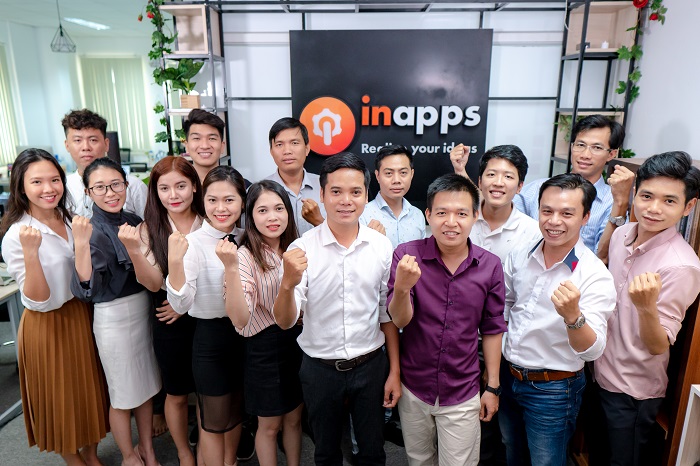
Let’s create the next big thing together!
Coming together is a beginning. Keeping together is progress. Working together is success.




